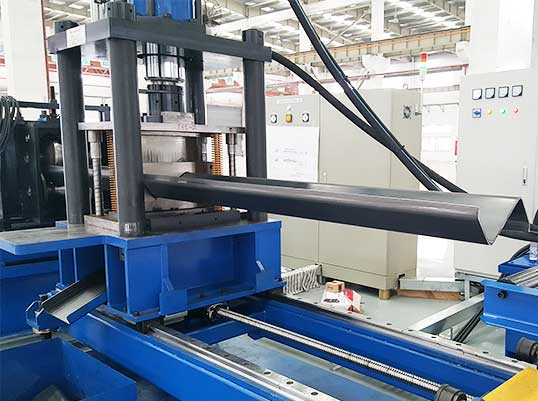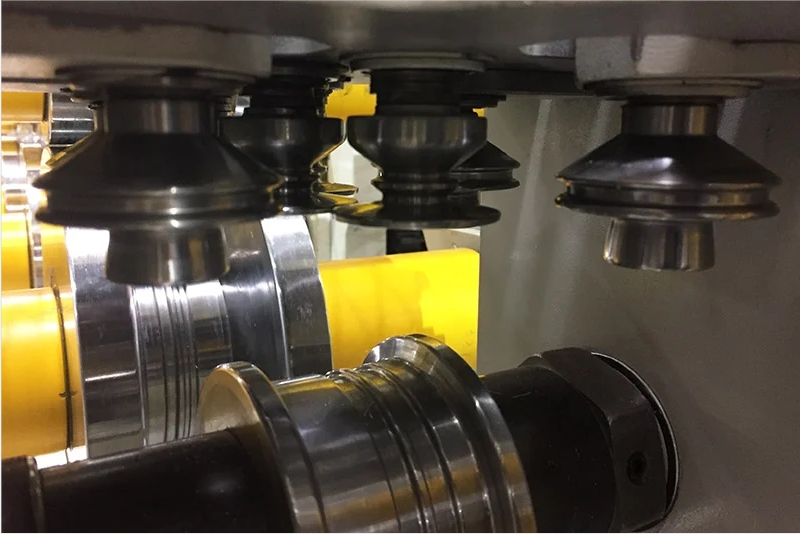Navigation Menu
Contact Us
- Email:
- info@wxavatar.com
- Address:
- Yurong Village, Yuqi Street, Huishan District, Wuxi, China.
Release Date:Jul 20, 2025 Visit:87 Source:Roll Forming Machine Factory
Selecting the right custom roll forming machine is a critical decision for manufacturers looking to produce high-quality metal profiles efficiently. The appropriate equipment can significantly impact production capabilities, product quality, and operational costs. This article outlines key factors manufacturers should evaluate when choosing a custom roll forming solution.

Production Requirements Assessment
1.Material Specifications
Consider the types of metals you'll be forming (steel, aluminum, copper)
Evaluate material thickness ranges needed for current and future products
Account for material hardness and temper characteristics
2.Profile Complexity
Analyze the geometric complexity of required cross-sections
Determine if secondary operations (notching, punching) will be integrated
Assess the need for multi-profile capability in a single machine
3.Volume Considerations
Evaluate current and projected production volumes
Consider seasonal fluctuations or variable demand patterns
Assess the balance between speed requirements and precision needs
Technical Specifications Evaluation
1.Machine Configuration
Determine the optimal number of forming stands for your profiles
Evaluate drive system options (electric, hydraulic, or combination)
Consider the need for vertical, horizontal, or universal mill designs
2.Precision and Tolerances
Review the machine's capability to maintain tight dimensional tolerances
Assess straightness and flatness requirements for finished products
Consider the repeatability needed for consistent quality
3.Tooling Considerations
Evaluate tool changeover systems and time requirements
Assess tool material quality and expected lifespan
Consider the availability of replacement tooling and maintenance support
Operational Factors
1.Floor Space and Layout
Measure available space for machine installation
Consider material handling requirements before and after forming
Evaluate integration with existing production lines
2..Automation Options
Assess the need for automatic material feeding systems
Consider computerized control systems for process monitoring
Evaluate options for automatic length measurement and cutting
3.Maintenance Requirements
Review recommended maintenance schedules and procedures
Assess accessibility for routine service and repairs
Consider availability of spare parts and technical support
Supplier Evaluation
1.Manufacturer Experience
Review the supplier's track record with similar applications
Request references from comparable operations
Evaluate their design engineering capabilities
2.After-Sales Support
Assess the availability of installation and training services
Review warranty terms and conditions
Consider the supplier's responsiveness to service requests
3.Upgrade Potential
Evaluate the machine's capacity for future modifications
Consider compatibility with emerging technologies
Assess the feasibility of adding auxiliary equipment later
Cost Considerations
1.Total Cost of Ownership
Evaluate energy consumption and efficiency features
Consider expected maintenance costs over equipment lifespan
Assess potential productivity gains against initial investment
2.Return on Investment
Calculate projected production improvements
Consider quality enhancement benefits
Evaluate potential reductions in material waste

Conclusion
Choosing the right custom roll forming machine requires careful analysis of technical requirements, operational needs, and long-term business objectives. By thoroughly evaluating these factors against available options, manufacturers can select equipment that delivers reliable performance and supports their production goals effectively. A well-considered decision will contribute to operational efficiency and product quality while providing flexibility for future needs.